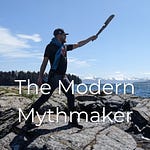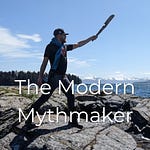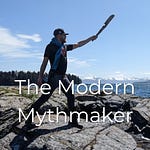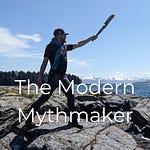“You can move energy throughout the body and hold it wherever you want to” said our teacher. “Using what are called ‘Bhandas,’ you can draw energy up through the earth, hold it by flexing different parts of the body, and then release it.”
Just like so much in my introduction to the deeper side of yoga, this sounded crazy the first time I heard it. And just like everything else that sounded crazy, it was not only doable but completely perspective-shifting.
We breathed in, and we held. And we had the experience of holding prana in our abdomens like life-giving fire.
To engage the ‘Bandhas,’ or energy locks, you first breathe through the nose and into the belly, filling everything up. Then you exhale everything out, and flex/hold the perineum (taint), pull the abdomen in and up as far as possible, and drop the neck to the chest. Holding your breath, you keep these locks engaged as long as possible, preferably until you inhale again.
Just like any breath retention work, this can make you feel preeeeetty good, with some full-body tingling. You feel waves of energy coursing through your body. when you exhale and hold, especially after sustained hyperventilation.
What I’m calling energy goes by many names. The ancient yogis called it “prana,” or life force. It’s been called qi. It’s also called norepinephrine, dopamine, and a host of other names, all referring to the cocktail of awesomeness that your brain releases when you are doing things that make you feel alive.
There really is something to this yoga thing, isn’t there?
So what is yoga, really?
Yoga is a way of life, a technique for reducing suffering and bringing yourself into alignment with the energy flow of everything. It is a series of tools for ensuring that you experience and cause the most minimal amount of suffering in your brief time on this earth.
Yoga means “yoke”, which in the context of ancient Sanskrit means “union.” Yoga is a tool for bringing the mind, body, and spirit into union with each other.
There’s so much more to yoga than meets the eye. The poses, or “asanas,” as they’re called, are designed to move energy throughout the body, but they are a small part of a much larger whole.
Asanas were seen as third in a series of eight steps that were designed to bring someone into a state of meditation and connection with the divine. After the asanas, you’re supposed to move into pranayama, the life force breathing techniques.
What yoga is and isn’t
Yoga is a method, built and refined over thousands of years, for taking the out-of-control and bringing it within our control. Yoga is a way to awaken to the essential humanness within us and learn to control ourselves before we go around trying to control the world.
It is not a product.
Yoga is meant for anyone who has fallen out of the enjoyment of life and the beautiful world we inhabit and would like to re-center themselves so that they might re-claim enjoyment, which is their natural birthright.
All of this was created thousands of years ago, in a society so different from ours it may as well have been martian, by people that nobody but a handful of scholars would be able to speak to if they were transported through time to today’s world.
Isn’t the world amazing?!
Some brief history
The roots of Yoga have been traced to the Indus Valley. In what has come to be known as the “Vedic Period” (5000–6000 years ago) great sages who had been experimenting with universal knowledge in deep meditative states began to write some of what they knew down, in what would become “The Vedas.” These texts set the groundwork for what would evolve into the Yoga we know today.
Building on The Vedas, the next sages, standing on the shoulders of giants, started to write The Upanishads and The Bhagavad Gita. These timeless holy books are still widely read, offering road maps to connect with the divine, and a balm to ease the suffering that naturally arises in human life.
Here’s where modern-ish yoga begins
Right around the time that history switched from B.C. to A.D, a sage named Patanjali danced in from stage left and blew everybody’s minds wide open.
Believing that Yoga was a tool for understanding and studying the mind, Patanjali created the “Eight Limbs of Yoga” to make yogic methods clearer. You can think of the eight limbs as a path to enlightenment through meditation. Each is part of a whole, but they are laid out in this order to make the path easy to follow.
Yama: Social restraints or moral conduct. How you affect those around you. Living a pure life in a way that can be seen by others (though being seen by others is not the goal). The Yamas and Niyamas are ways of being, designed to purify you before you enter the practice so that you can bring your purest self to meditation. The Yamas are:
Ahimsa: nonviolence
Satya: truthfulness
Asteya: non-stealing
Brahmacharya: non-excess
Aparigraha: non-possessiveness, non-greed.
Niyama: Self-discipline. Personal observances or purity, study, and tolerance. Purifying your inner self (things you do when no one is looking). The Niyamas are:
Saucha: purity
Santosha: contentment
Tapas: self-discipline, training your senses
Svadhyaya: self-study, inner exploration
Ishvara Pranidhana: surrender
Asana: Once you’ve purified yourself through Yamas and Niyamas, you’re ready to begin Asana practice. Asanas were originally designed to calm the body for meditation, they are physical movements and postures designed to move energy throughout the body and steady the mind so that meditation practice can begin. This small limb of the eight-limbed path is what Western society sees as “yoga.” However, the poses and the fitness aspect are only a small part of the ancient method.
Pranayama: Breath control, enhancing and guiding the universal life force energy “Prana”. Used to bring awareness to the connection between the breath, the mind, and emotions.
Pratyahara: Sense withdrawal in preparation for meditation. Encouraging our senses inward. Making an effort to withdraw from the physical world.
Dharana: Concentration, one point focus. Concentration on a sound, a statue, a candle. Anything to bring the mind into deeper focus to prepare for meditation.
Dhyana: Meditation. Being aware without the need for focus (a state of meditation beyond Dharana).
Samadhi: To know oneness, ecstasy, bliss. Union with the Divine Consciousness. Feeling a connection to all living things.
In the west, we only practice Asana
Unfortunately, Asana, the fitness aspect, was all that made it to the western world (for most, but not all western practitioners) because it’s the most commodifiable. When you look back at the ancient yogis, however, there was much more that can help us escape the cycle of suffering.
Patanjali’s eight-fold method is powerful for calming the monkey mind, showing how we can steady the turbulent ocean of thoughts and bring them under our control through conscious awareness. But he was not the end of the chain.
After Patanjali there were hundreds of great teachers who took what he had invented and brought it to the world, refining the practices so that the average person could experience it.
Yoga brings us back into alignment with Life
What I love most about yoga is that it’s non-denominational. The philosophies that underlie yoga are timeless, and they speak to human suffering across cultures. Nothing in yoga suggests that the philosophies and methods for reducing suffering are limited to Norwegians, or that any group of people deserves to be downtrodden or alienated.
Yoga is not a religion. It does not demand your blind faith. It’s a technique for understanding the world at the root level, without the crap that builds up on our psyches from living in a crazy society.
The more I learn about it, the more I want to know.
To continue my education, I’ve booked a six-week 300-hour yoga teacher training in Ecuador that starts on February 6th, that also goes into Mayan wisdom and Shamanism. I’m SO EXCITED!
If you’re as curious as I am, and you’d potentially be interested in joining me for that, I’ll send you some details!












Share this post